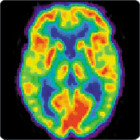
Exposure to trauma, delinquency and school failure are related, according to the Robert Wood Johnson Foundation (RWJF). More than sixty percent of children have witnessed violence and 46.3 percent have experienced physical assault.
If you have direct experience with kids who’ve gone through traumatic experiences, you may want to join the online forum called "Chronic Trauma and the Teen Brain". Benjamin Chambers writes that the Robert Wood Johnson Foundation is collecting information and data. If you can answer the following question, this forum is for you:
“Where are there opportunities within these adolescent systems to better identify, assess and intervene to support the needs and healthy development of young people affected by chronic trauma?”
For more information:
Chronic Trauma and the Teen Brain - An Online Forum
The Robert Wood Johnson Foundation








